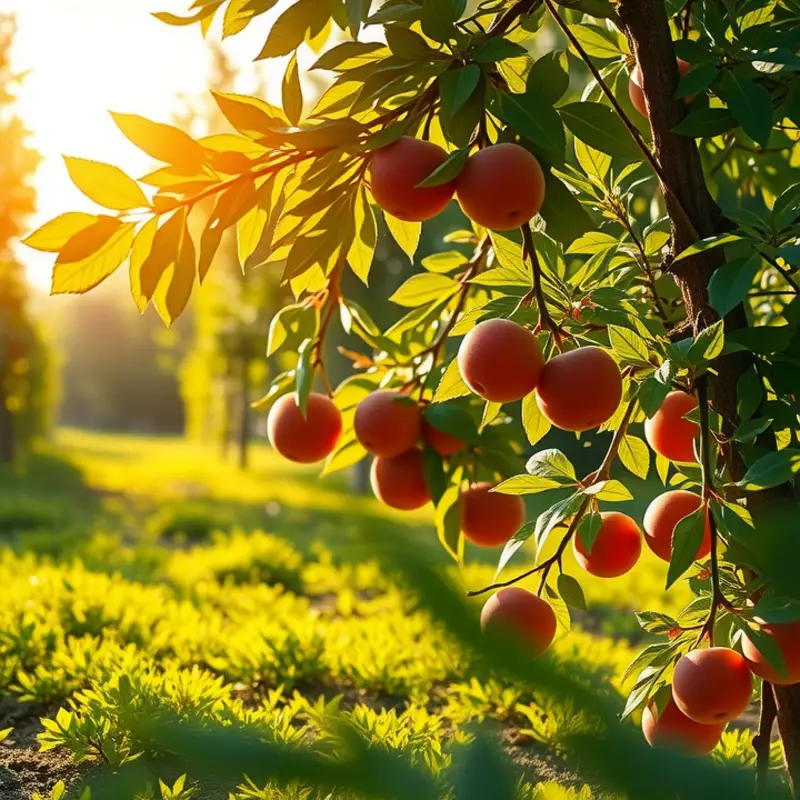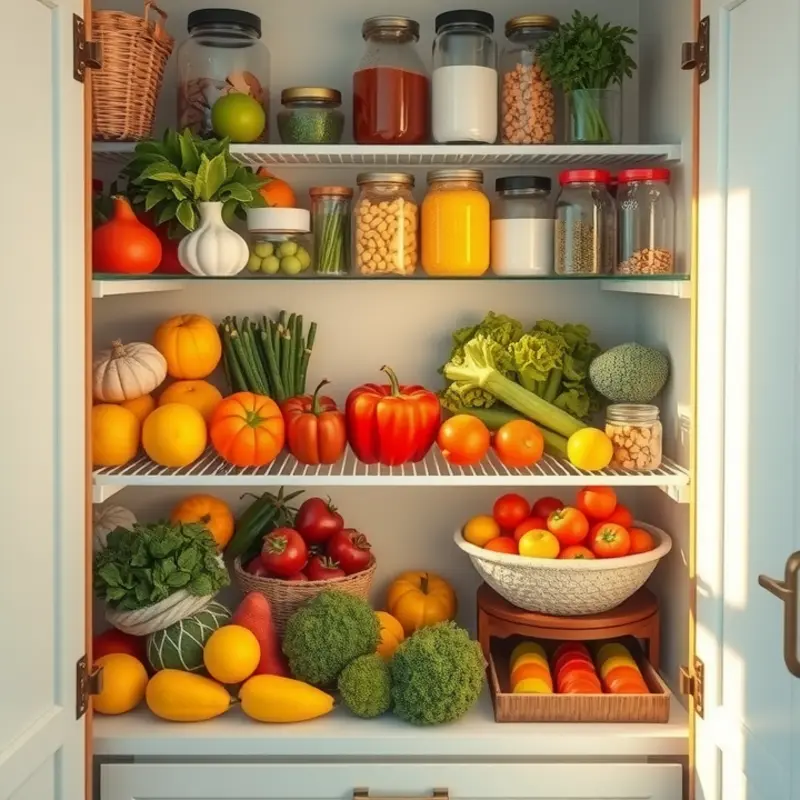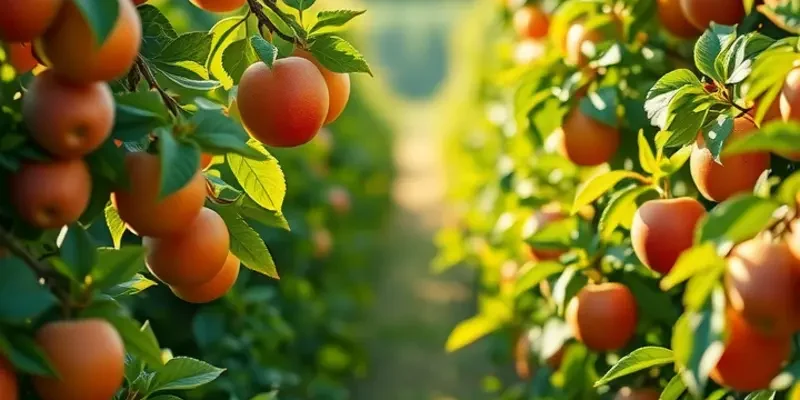Ensuring the safety of our produce is essential not only for our health but also for reducing waste in our kitchens. Contamination can occur at any stage before food reaches our plates, leading to spoilage and potential illness. By learning to effectively store, manage, and separate food items, we can enhance our culinary experiences while protecting our families from harmful pathogens and spoilage. This guide provides actionable steps to avoid contamination, helping you keep your produce fresh and safe.
Smart Storage: Keeping Your Produce Safe

Storing produce properly is crucial for both food safety and maximizing freshness. Different types of produce require distinct storage methods to ensure they remain free from contamination. One foundational technique involves understanding the role of humidity in storage.
Most refrigerators come equipped with crisper drawers that offer humidity control settings. High-humidity settings are ideal for leafy greens such as lettuce, kale, and spinach. These vegetables thrive in moisture-rich environments, preventing them from wilting. On the flip side, low-humidity settings suit fruits like apples, pears, and stone fruits, as these emit ethylene gas, which can accelerate ripening and spoilage of nearby produce.
Separating fruits from vegetables is another key strategy. Ethylene-sensitive vegetables, like carrots and broccoli, can go bad quickly if stored with ethylene-producing fruits. A practical approach is to dedicate one crisper drawer to fruits and another to vegetables to avoid unwanted ripening interactions.
Root vegetables such as potatoes, onions, and garlic should be stored in a cool, dark place outside the refrigerator. For potatoes, preventing light exposure helps avoid greening and sprouting. Similarly, onions and garlic last longer in ventilated containers within a pantry. These root vegetables should never be stored together, as onions release moisture and gas that can spoil potatoes.
Tender herbs like parsley, cilantro, and basil prefer a different kind of care. For these, cut their stems and place them in a jar with a small amount of water, covering the leaves with a plastic bag. Store them in the refrigerator and they’ll stay fresh longer, akin to keeping flowers in a vase. Basil, however, is sensitive to cold and should be kept at room temperature and away from light to prevent wilting.
Meanwhile, hardier herbs such as rosemary and thyme benefit from being wrapped in a damp paper towel and stored in a plastic bag in the refrigerator. This method helps maintain their moisture levels without overdoing it, thus extending their shelf life.
Understanding the layout and conditions of your storage spaces is equally important. Regular cleaning of storage areas reduces the risk of mold and bacterial growth. Additionally, keeping these areas dry prevents the formation of moisture pockets, which can lead to rot.
For those looking towards sustainable kitchen practices, choosing reusable storage solutions can also play a part in reducing waste. Furthermore, integrating energy-efficient storage practices aligns with eco-friendly goals as discussed in the article on eco-smart kitchen storage. Such practices contribute to the longevity of produce and the environment.
By adopting these smart storage techniques, households can significantly cut down on food waste while ensuring their produce remains uncontaminated and fresh for longer periods.
Tidy Practices: Managing Food to Prevent Waste

Keeping a tidy kitchen is essential for managing food effectively and reducing contamination risks. Organizing both your fridge and pantry not only curbs food waste but enhances safety. Begin with the refrigerator, where optimal arrangement plays a crucial role.
Prioritize storing items based on their spoilage speed. Place highly perishable items, such as meats and dairy, on the refrigerator’s lower shelves, where temperatures are coldest. Use the door, which experiences the most temperature fluctuations, for condiments and beverages. Maintain visibility of all products, rotating older items to the front and newer ones to the back.
The pantry demands equal attention. Store goods in airtight containers to ward off pests. Group items according to type—grains, canned goods, spices—for easy access. Labeling is vital here; include both the name and the purchase date to keep track of freshness.
Implement a labeling strategy throughout the kitchen. Use removable adhesive labels to mark containers. Noting the date of storage is particularly helpful for homemade foods and leftovers. Consistent labeling minimizes waste by reminding you to use items before they spoil.
Spotting spoilage is an overlooked skill that can drastically cut down unnecessary waste. Regularly inspect produce, meats, and dairy for signs of spoilage, such as mold, off smells, or discoloration. Be vigilant with packaged goods; bulging cans or torn boxes often indicate compromised quality.
With these practices in place, extend their benefits by integrating them into meal planning. Organized storage simplifies meal preparation and ensures ingredients are used while still fresh. For more about effective meal planning and reducing kitchen waste, explore practical ingredient batching.
Effective food management isn’t just about organization; it’s about fostering a proactive mindset toward waste reduction. By maintaining clear labels, adhering to storage guidelines, and staying vigilant for spoilage signs, you’ll not only extend the life of your food but contribute to a safer kitchen environment.
Final words
By adopting these practical strategies for avoiding contamination in produce, you can significantly improve food safety in your home. From smart storage techniques to effective kitchen management, each step plays a vital role in preserving the integrity of your food and keeping your family safe. Remember, simple actions like separating fruits and vegetables and keeping your kitchen orderly can make a world of difference. Implementing these practices can lead to less waste, better health, and an enhanced culinary experience for you and your loved ones.







